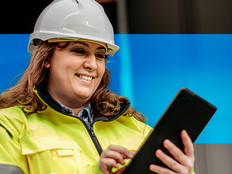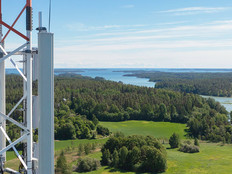Using UC to Facilitate Learning
Federal agencies as diverse as the Army National Guard (ARNG) and NASA are combining distance learning with unified communications to train and educate both military personnel and the general public.
The ARNG Distributed Learning Program (DLP) functions mainly to train soldiers, but it also provides some intergovernmental training and is used as a communications tool by first responders and the ARNG in crises such as hurricanes or terrorist attacks. NASA, meanwhile, uses its distance learning network primarily to deliver special science classes to K–12 schools and colleges.
According to program manager Maj. Robert McAllister, the ARNG DLP was initiated in 1995. The network that the agency developed provides ARNG soldiers with high-speed access to military readiness training and job performance and professional development aids, as well as morale, welfare and recreation (MWR) support. “The MWR feature is really important for our deployed soldiers because it gives them face-to-face communication with their family members, including, for example, seeing a new son or daughter for the first time via video conference,” McAllister explains.
The DLP’s audio/visual capabilities are powered by Polycom video conferencing equipment. The system’s T1 network is equipped with Cisco Systems routers and Brocade switches. Soldiers view Video Teletraining (VTT) sessions on a mix of large screens, desktop computers and HP thin clients.
More than 330 DLP classrooms — including fixed classrooms, which use desktops, and mobile distributed learning classrooms, which use HP thin-client notebooks — are accessible nationwide. Typically, for a VTT, a facility will connect over the backbone network through Polycom multipoint control units.
“We used to run point-to-point connections, but with the MCUs, it’s not really necessary anymore,” McAllister explains. “The video sessions are essentially seamless to the soldiers and run over our T1 backbone network.”
In a typical classroom session, a soldier sits at a desktop and watches the session both on a large screen in front of the classroom and at the desktop. During the session, the soldier has access to any number of UC technologies, most notably Defense Connect Online, a collaboration platform based on Adobe Connect that lets soldiers run two-way audio and share presentations, and milSuite, which promotes workforce collaboration and secure information sharing between federal and state agencies. Soldiers also have access to Guard Knowledge Online, a Microsoft SharePoint 2010 portal that’s used for document sharing, and Army Knowledge Online, a database of Army-specific content and related resources.
“These capabilities reduce — and, in many cases, eliminate — the need to send soldiers to traditional schools, thereby reducing travel and time away from home and families,” McAllister says. “It also allows for greater flexibility in scheduling, improves the overall quality of the training, and increases our ability to support command and control and emergency response–related events.”
Brent Kelly, vice president and principal analyst at Constellation Research, says he expects to see more people collaborating the way Army National Guard soldiers have been.
ARNG has been able to connect its people with many different kinds of tools, he says. “These video-enabled suites create a very fluid and robust way to work.”
Digital Learning: The Sky’s No Longer the Limit
At NASA, video conferencing makes scientific discoveries come alive for students of all ages via the Digital Learning Network (DLN). Interactive sessions are available on topics ranging from asteroids and exploring aeronautics to women in aviation. Students also can participate in sessions with the scientists working on live missions.
48,000
The number of training sessions offered by the Army National Guard via distributed learning in fiscal year 2012 (as of Aug. 31)
For example, when the rover Curiosity started sending back images from Mars earlier this year, live webcasts from the Jet Propulsion Laboratory and Goddard Space Flight Center allowed students to e-mail questions directly to the education specialists at the centers, says DLN Manager Caryn Smith Long.
NASA also runs a mentoring program over the DLN called Virtual Visits. “The idea is for the students to find out what it takes to pursue a STEM-based career, what type of schooling is required and what the job is like,” Long explains.
When the agency first built the DLN, she continues, most of the sessions were run over traditional H.323 video conferencing systems. “But now that web cameras and microphones are far cheaper, more reliable and of a higher quality, it’s possible to hook inexpensive speakers to a PC,” Long says, and to rely on projectors, which most schools have. “Today, we use a range of technologies, from point-to-point sessions via video conference to web conferences over Skype or Adobe Connect,” she adds.








